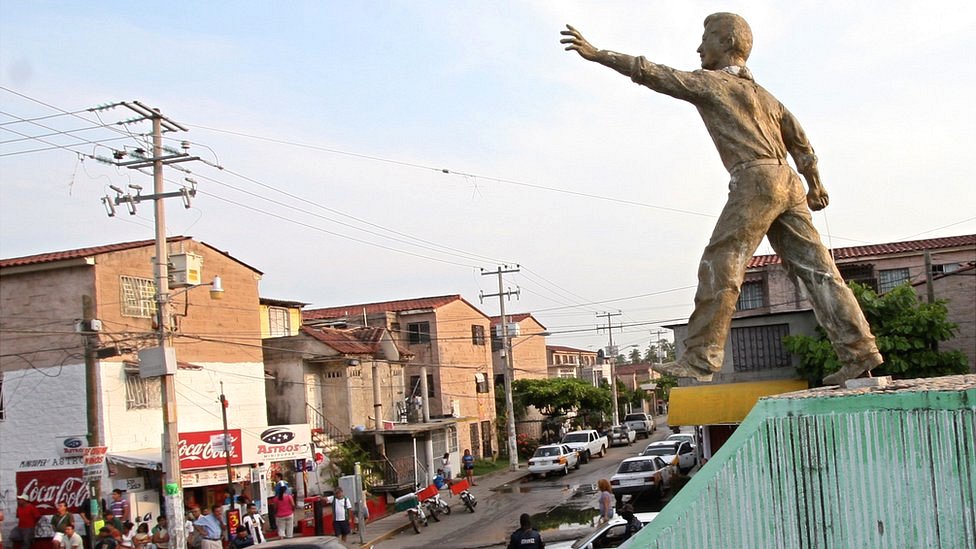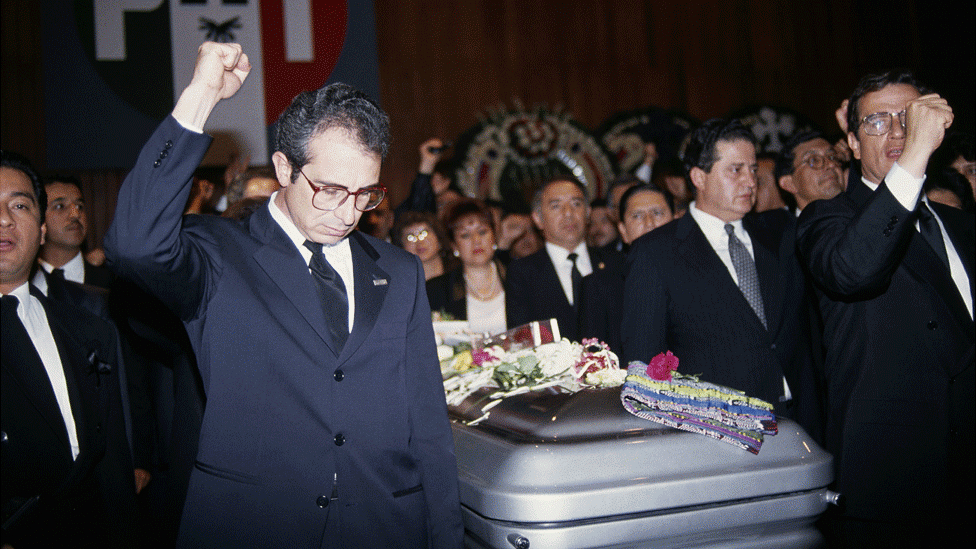This March 23 marks the 27th anniversary of the assassination of Luis Donaldo Colosio, official candidate for the presidency. This “magnicide” of the presidential candidate was a watershed that among other consequences explains the historical violence that is shaking Mexico today.
México, (March 23, 2021).- On March 23rd, 1994, Luis Donaldo Colosio, the official candidate for the presidency of Mexico, makes his way through a crowd after concluding a political event in Tijuana, Baja California. Suddenly someone brings a pistol to the politician’s head and pulls the trigger… all hell breaks loose, the PRI presidential candidate collapses with a bullet in his head. The alleged murderer, Mario Aburto, is arrested. Colosio was taken to a hospital, and two hours later he is declared dead.
March 23, 1994, a sad day for Mexico indeed. That Wednesday the nation began to change. The country, specialists agree, entered a process of violence that, 25 years later, still goes on.
“The message was sent that anything goes,” political analyst Agustín Basave, former president of the Party of the Democratic Revolution (PRD), told BBC Mundo.
” I am convinced that there began the spiral of violence that still plagues Mexico today.”
The death of Colosio, candidate of the then ruling Institutional Revolutionary Party (PRI) unleashed a political crisis with some violent episodes. One of them was the assassination, in September of that year, of PRI Secretary-General Francisco Ruiz Massieu, former brother-in-law of President Carlos Salinas de Gortari.
Mexico ended 1994 with a deep political crisis, known in the country as “the December error” although internationally it was called the “Tequila Effect.”
Degradation
Due to the economic crisis, thousands of people lost their jobs, companies, or properties. According to data from the governmental National Institute of Statistics and Geography (Inegi), in 1996 the index of people with patrimonial poverty was 69% of the population. In addition to the economic difficulties, the country was experiencing a gradual increase in violence and insecurity.
In June 1995, 17 peasants were murdered in Aguas Blancas, Guerrero, who were attacked by state police.
The incident led to the public appearance of the Popular Revolutionary Army (EPR), an armed movement inherited from guerrilla groups formed in the ’60s and ’70s.
Meanwhile, the Zapatista Army of National Liberation (EZLN), which had taken up arms on January 1 of that year, denounced harassment by paramilitaries in their communities in Chiapas, in the southeast of the country. Pressure from these groups led to the massacre of 45 indigenous people who were praying in the rural community of Acteal, on December 22, 1997.
That same year, the National Public Security System (SNSP) was created, (which began the official measurement of violence rates).
One of its first results was that more than 90% of crimes were not reported, due to fear or distrust of the authorities.
There was also a growing trend in the number of violent homicides, which in 1997 reached the historic figure of 13,000 in Mexico.
Around that time, the Los Zetas group was born, made up of 40 elite ex-military men and originally the armed wing of the Gulf Cartel. Years later, it became one of the most violent drug trafficking organizations in the region, according to authorities.

The common thread
One of the origins of this process is the murder of Colosio, says Flavio Meléndez Zermeño, a researcher at the University Center for Health Sciences at the University of Guadalajara. The death of the candidate, whom most polls placed as the winner of the 1994 presidential elections, represented “the coup de grace to the political regime of the state party,” he explained to BBC Mundo.
What emerged was a political system vulnerable to organized crime , which in some years caused scandals.
An example was General Jesús Gutiérrez Rebollo, appointed in December 1996 as the first head of the National Institute to Combat Drugs. Months later, the military man was arrested when his ties to Amado Carrillo “El Señor de los Cielos”, leader of the Juárez Cartel, were discovered.
Similar cases occurred in the following decades at different levels of government.
This happened, for example, with the former governor of Tamaulipas, Eugenio Hernández, accused in US courts of protecting the Los Zetas cartel. Or the recent accusations of employees of Petróleos Mexicanos (Pemex) who are accused of collaborating with fuel theft gangs.
In all this, the common thread is assassination, says researcher Meléndez Zermeño.
“What happened was an interpenetration between State structures and organized crime, especially in the framework of this so-called war against drug trafficking,” he insists.
“That drives violence, murders, disappearances, by the thousands ”.

Breakthrough
The analyst Agustín Basave agrees on this. “The assassination of Colosio was a negative watershed, a disastrous milestone that led Mexico down a path where anything goes.”
Before 1994 there were unwritten rules in the country to prevent political violence . But with the crime of the presidential candidate “that was broken, at that point began the climate of violence that we have today,” he says.
The message was that the authorities did not respect the civility agreements, something that left some gaps that were filled by organized crime. The crisis that began that year allowed a greater presence of organized crime in government structures.
The clearest example is the high number of local police corporations that were infiltrated by organized crime and drug trafficking gangs, according to the United States government.
“The assassination of Colosio leads to a mutation of the Mexican state, but not to democracy but to the state of crime,” says Flavio Meléndez.
“What it leads to is a criminal state (narco state), we are still in it and we are living the consequences.”


